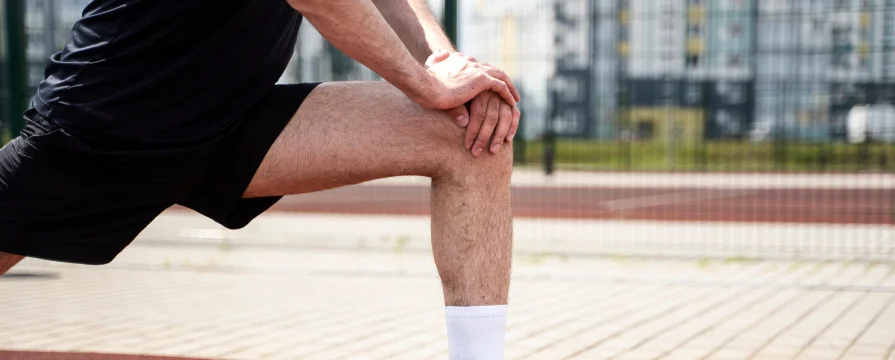A common issue that affects people of all ages and lifestyles is knee discomfort. Prevention and treatment to be effective, it is essential to understand underlying causes. Injuries including meniscus tears, developing osteoarthritis tendonitis, inflammation, and tissue rips or strains rank among the top seven common causes of knee discomfort. Furthermore, discomfort can be made worse by things like overuse, bad biological mechanics, and excess weight. Thankfully, there are number of options available, from medicine, physical therapy, and rest to, in more extreme situations, surgical procedures. Proactively addressing these factors can help people reduce discomfort, regain mobility, and keep their knees in peak condition.
Keeping your knees healthy and mobile overall depends on proper knee care. Balanced approach to knee care includes a number of strategies, such as consistent exercise to build muscles surrounding knee joint, muscles that help in stability and support, such as calf, hamstring, and quadriceps. Maintaining a healthy weight also minimises the risk of developing illnesses like osteoarthritis by reducing excess load on the knees through appropriate eating and lifestyle choices.
In both daily tasks and exercise, good posture and body mechanics help to avoid putting undue strain on the knees. Stretching and foam rolling are two mobility and flexibility exercises that can help increase range of motion and decrease stiffness. Ultimately, paying attention to your body’s cues and acting quickly to get medical help if you experience any pain or discomfort will guarantee that any possible knee problems are effectively managed and treated early on, preserving the long-term health and functionality of your joint.
Here are the Top 7 Common Knee Pain Causes and Solutions
1. Osteoarthritis (OA)
The progressive loss of cartilage in the knee joint is the hallmark of osteoarthritis, a chronic illness. This degeneration results in discomfort, stiffness, and edoema. Age, genetics, prior knee injuries, obesity, and overuse are risk factors for osteoarthritis (OA). The goals of OA management techniques are to lessen discomfort and improve joint function. This could include both pharmaceuticals like painkillers and anti-inflammatory drugs and non-pharmacological therapies including physical therapy, exercise, weight management, and assistive gadgets. Surgical alternatives such joint replacement or surgery may be taken into consideration in extreme situations.
2. Patellofemoral Pain Syndrome (PFPS)
Runner’s knee, also known as patellofemoral pain syndrome, is characterised by pain behind or around the kneecap. Overuse, imbalanced or weak muscles, biomechanical problems, or inappropriate training methods can all lead to PFPS. Rest, ice, compression, and elevation (RICE therapy) is a common treatment for post-polio syndrome (PFPS) with the goal to minimise discomfort and inflammation.
3. Meniscus Tear
One common knee injury that can result from quick twisting motions, direct trauma, or aging-related degenerative processes is a meniscus tear. Pain, edoema, stiffness, and a feeling of the knee joint locking or catching are among the symptoms. Depending on the location and severity of the rip, there are many treatment options. For small tears, conservative measures like rest, ice, and physical therapy could be enough.
4. Ligament Injuries (ACL, MCL)
Sports activities, accidents, or violent incidents can result in injuries to the knee ligaments, including the medial collateral ligament (MCL) and anterior cruciate ligament (ACL). These wounds frequently cause discomfort, edoema, instability, and restricted range of motion. The degree and nature of ligament damage determine how best to treat the injury.
5. Bursitis
The inflammation of the bursae, which are tiny sacs filled with fluid that cushion the knee joint and lessen friction between the bones, tendons, and ligaments, is known as bursitis. Overuse, extended kneeling, or direct trauma to the knee can all result in bursitis. Pain, tenderness, swelling, and warmth in the vicinity of the affected area are among the symptoms. Usually, anti-inflammatory drugs, activity adjustment, and rest are used to treat bursitis in order to lessen discomfort and swelling.
6. Iliotibial Band Syndrome (ITBS)
The iliotibial band, a thick band of connective tissue that runs down the outside of the thigh, can become inflamed or irritated, leading to ITBS, a frequent overuse injury. Running, cycling, and hiking are examples of sports that frequently cause repeated knee bending and are linked to ITBS. Pain, swelling, and tightness on the outside of the knee, particularly when moving, are some of the symptoms.
7. Patellar Tendonitis (Jumper’s Knee)
Jumper’s knee, or patellar tendonitis, is an overuse condition characterised by inflammation of the tendon that joins the shinbone to the kneecap. Athletes who participate in sports that demand explosive movements or repeated jumping are frequently afflicted by this ailment. Pain, stiffness, and swelling in the vicinity of the tendon in the patella are among the symptoms.
Conclusion
Being aware of many causes of knee pain allows people to take preventative and remedial action. People can seek right treatment that is customised to meet their unique needs by identifying symptoms and indicators linked to arthritis, injuries, and other contributing factors. Objective is always to reduce pain, restore function, and improve overall quality of life, by surgical interventions like surgery or more conservative ones like rest, exercise, and lifestyle changes. Furthermore, doing preventive steps first such as keeping a healthy weight, using good biomechanics, and getting regular exercise can help reduce the likelihood of developing knee discomfort later on and improve joint health and well-being over the long run.




